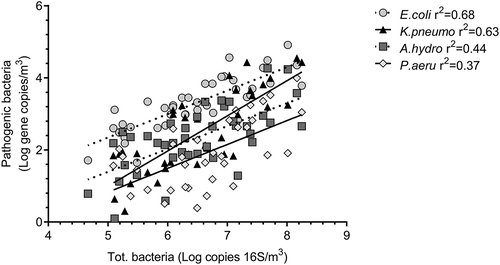Figures & data
Table 1. Description of treatment steps and number of sites sampled.
Table 2. Primers and probes used to detect selected microorganisms by qPCR.
Figure 1. Relative humidity measured during different treatment steps at all WWTPs visited in winter and summer. The average relative humidity was lower in winter than in summer (p < 0.0001). There were also significant differences (*) in the relative humidity between treatment steps for both seasons (screening p = 0.002; degreasing/grit removal p = 0.0003; Biofiltration p = 0.005).
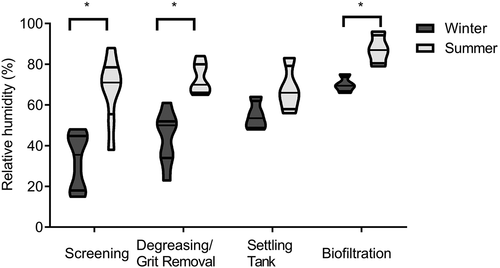
Figure 2. Correlation between relative humidity and total bacteria obtained by qPCR and culture, culturable gram-negative bacteria and endotoxins for all WWTPs.
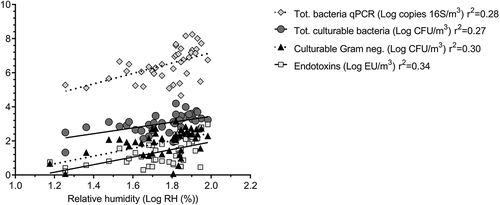
Figure 3. Concentrations of culturable gram-negative bacteria measured in air during different treatment steps at all WWTPs visited in winter and summer. There was a significant difference (*) in culturable gram-negative bacteria concentrations between winter and summer at the screening site (p = 0.003) and the degreasing/grit removal site (p = 0.01). The solid line represents the IRSST recommended limit and the dotted line represents the recommended limit based on endotoxins/culturable gram-negative correlations in this study.

Figure 4. Concentrations of total culturable bacteria measured in air during different treatment steps at all WWTPs visited in winter and summer. Concentrations were significantly higher (*) in summer for the screening (p = 0.001) and the grit/FOG removal (p = 0.003). The solid line represents the IRSST recommended limit and the dotted line represents the recommended limit based on endotoxins/total culturable bacteria correlations in this study.
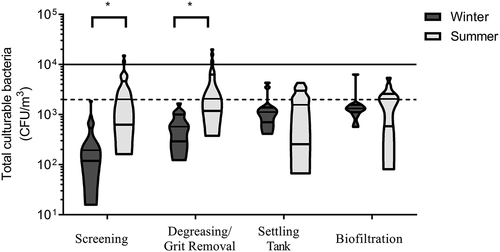
Figure 5. Concentrations of endotoxins measured in air during different treatment steps at all WWTPs visited in winter and summer. Concentrations were significantly higher (*) in summer compared to winter in screening (p = 0.01), degreasing/grit removal (p = 0.0003), and biofiltration (p = 0.03). The dotted line represents the Dutch Expert Committee on Occupational Safety (DECOS) recommended limit of exposure (LOE) for endotoxin concentration.
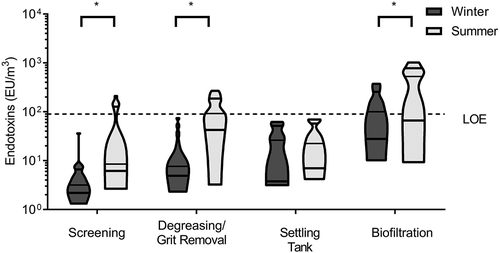
Figure 6. Correlation between endotoxins and total bacteria obtained by qPCR, Total culturable and culturable gram-negative bacteria for all WWTPs. The vertical dotted line represents the Dutch Expert Committee on Occupational Safety (DECOS) recommended exposure limits.
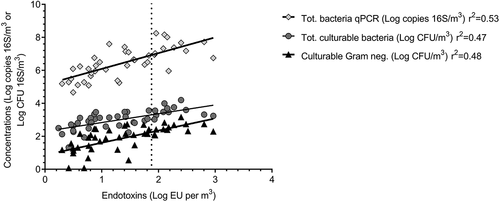
Figure 7. Concentrations of total bacteria obtained by qPCR during different treatment steps at WWTPs visited in winter and summer. Concentrations were significantly higher in summer (*) for the screening (p = 0.002), the degreasing/grit removal removal (p = 0.0003), and the settling tank (p = 0.006). The dotted line represents the recommended limit based on endotoxins/total bacteria by qPCR correlations in this study. The detection limit of the method is 100 copies 16S/m3).
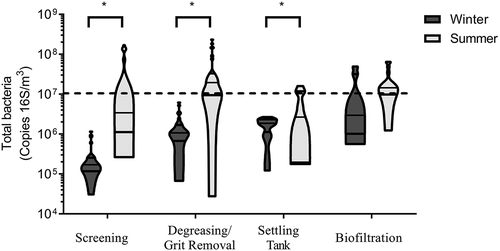
Table 3. Concentrations of pathogenic bacteria found in the air at WWTPs in winter and summer at each of the treatment sites (gene copies/m3 air).
Figure 8. Correlation between the four pathogenic bacteria detected in the project and total bacteria obtained by qPCR for all WWTPs.
